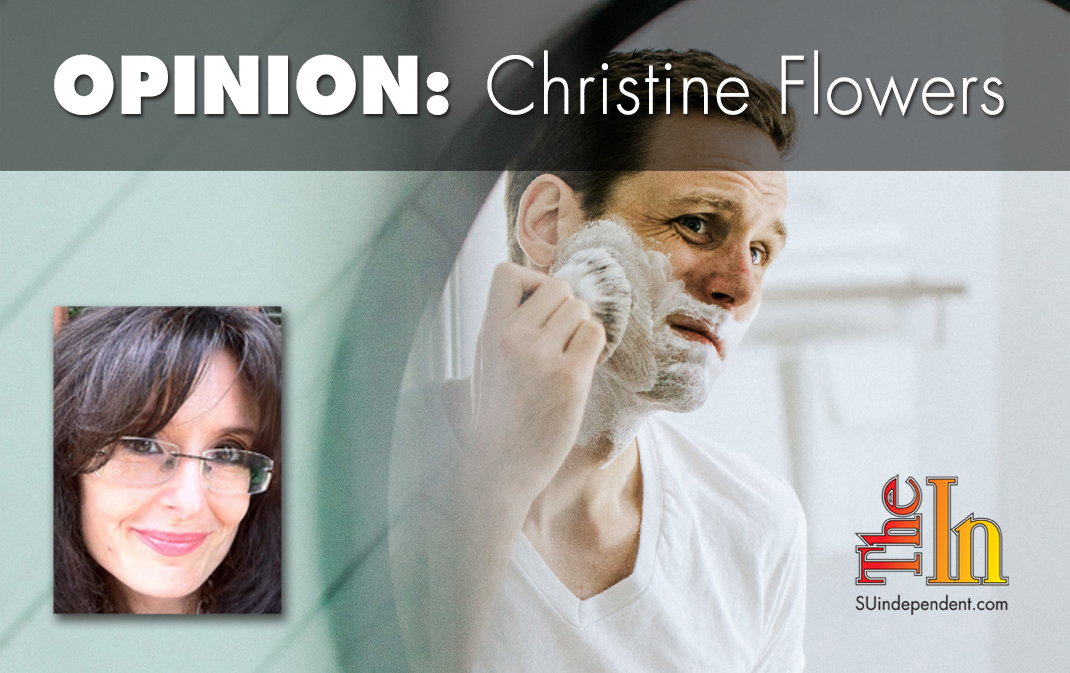
Toxic masculinity is a myth
Last week, shaving-supply company Gillette released a controversial ad reminding guys of their “toxic masculinity,” a phrase that has popped up to describe the supposed hazards of typically male behavior.
The ad begins by showing men engaging in Neanderthal-like activities including cat-calling, bullying, mansplaining, and using sexual innuendo when talking to women. Then, in a cloyingly obvious nod to #MeToo, the ad suggests that men can “get closer to [their] best” by being empathetic to women’s needs and intervening when their pals engage in harassing behavior.
The “short film,” as the razor giant calls it, quickly went viral. As of this writing, more than 16 million people had viewed it on YouTube. While some have praised Gillette for challenging behavioral norms, others are threatening to boycott the company for stereotyping all men as misogynists and bullies.
The message I see in this ad is that men need to stop being men and that men’s default position is bestial. I think that’s outrageous.
I am not surprised that ad executives have fallen prey to the “men are bad” narrative, which is the extreme and ridiculous response to the equally extreme and ridiculous “women are victims” narrative that has become conventional wisdom in the wake of the sexual abuse accusations against Harvey Weinstein. Madison Avenue has about as much of a social conscience as Wall Street.
Unfortunately, the executives at Gillette aren’t the only ones who think that men are a problem.
This month, the American Psychological Association released its first-ever guidelines designed to help psychologists work with men and boys to address the so-called epidemic of “toxic masculinity.” According to the APA’s research, “traditional masculinity — marked by stoicism, competitiveness, dominance, and aggression — is, on the whole, harmful.”
I believe this hostility toward men is dangerous, but I also know that it’s nothing new. As the second and third wave feminists gained momentum over the last 50 or so years, they bolstered a narrative that has become accepted wisdom: Men, the patriarchy, and masculinity in general have been the source of women’s suffering. Women are taught to blame men for everything bad that has ever happened to them. The #MeToo movement is just the next generation of this.
The new guidelines put a negative spin on characteristics that have traditionally belonged to the male of the species. For example, they treat men and boys’ reluctance to “talk” and share their feelings (unlike women and girls who use language to bond) as something harmful because it implies that men can’t express their emotions. That’s much too general a statement to make.
As someone who loves men very much and who grew up around the John Wayne-Gary Cooper-Jimmy Cagney archetypes, this frightens me. When I taught at the Haverford School almost 30 years ago, I worked with boys who were filled with energy, aggression, ambition, joy, and courage. While it was necessary to channel those qualities in the right direction, it would never have occurred to me to teach those kids that their natural inclinations were “toxic.”
It seems to me that the APA is trying to use psychology to encourage men and boys to go against their inherent nature, to feminize them, to socialize them into communicating more like females. I also taught at Villa Maria, a girls’ school, and believe me when I tell you that not every thought needs to be expressed. Stoicism has an upside.
In my opinion, these guidelines are designed to change men so that women who are threatened can feel safe from the supposed “toxic masculinity” — aka male human nature.
The people who support the APA’s new guidelines and praise Gillette’s message are pretending to care about the welfare of boys and men, but I don’t believe that’s true. I believe they are mistakenly trying to protect women from a patriarchy that they deem to be harmful.
Masculinity is not toxic. It’s normal, it’s human, and it’s good. We need to remember that, despite what Madison Avenue or #MeToo wants us to believe.
The viewpoints expressed above are those of the author and do not necessarily reflect those of The Independent.
How to submit an article, guest opinion piece, or letter to the editor to The Independent
Do you have something to say? Want your voice to be heard by thousands of readers? Send The Independent your letter to the editor or guest opinion piece. All submissions will be considered for publication by our editorial staff. If your letter or editorial is accepted, it will run on suindependent.com, and we’ll promote it through all of our social media channels. We may even decide to include it in our monthly print edition. Just follow our simple submission guidelines and make your voice heard:
—Submissions should be between 300 and 1,500 words.
—Submissions must be sent to editor@infowest.com as a .doc, .docx, .txt, or .rtf file.
—The subject line of the email containing your submission should read “Letter to the editor.”
—Attach your name to both the email and the document file (we don’t run anonymous letters).
—If you have a photo or image you’d like us to use and it’s in .jpg format, at least 1200 X 754 pixels large, and your intellectual property (you own the copyright), feel free to attach it as well, though we reserve the right to choose a different image.
—If you are on Twitter and would like a shout-out when your piece or letter is published, include that in your correspondence and we’ll give you a mention at the time of publication.
Articles related to “Toxic masculinity is a myth”
The Women’s March on Washington: Since when are all women leftists?



